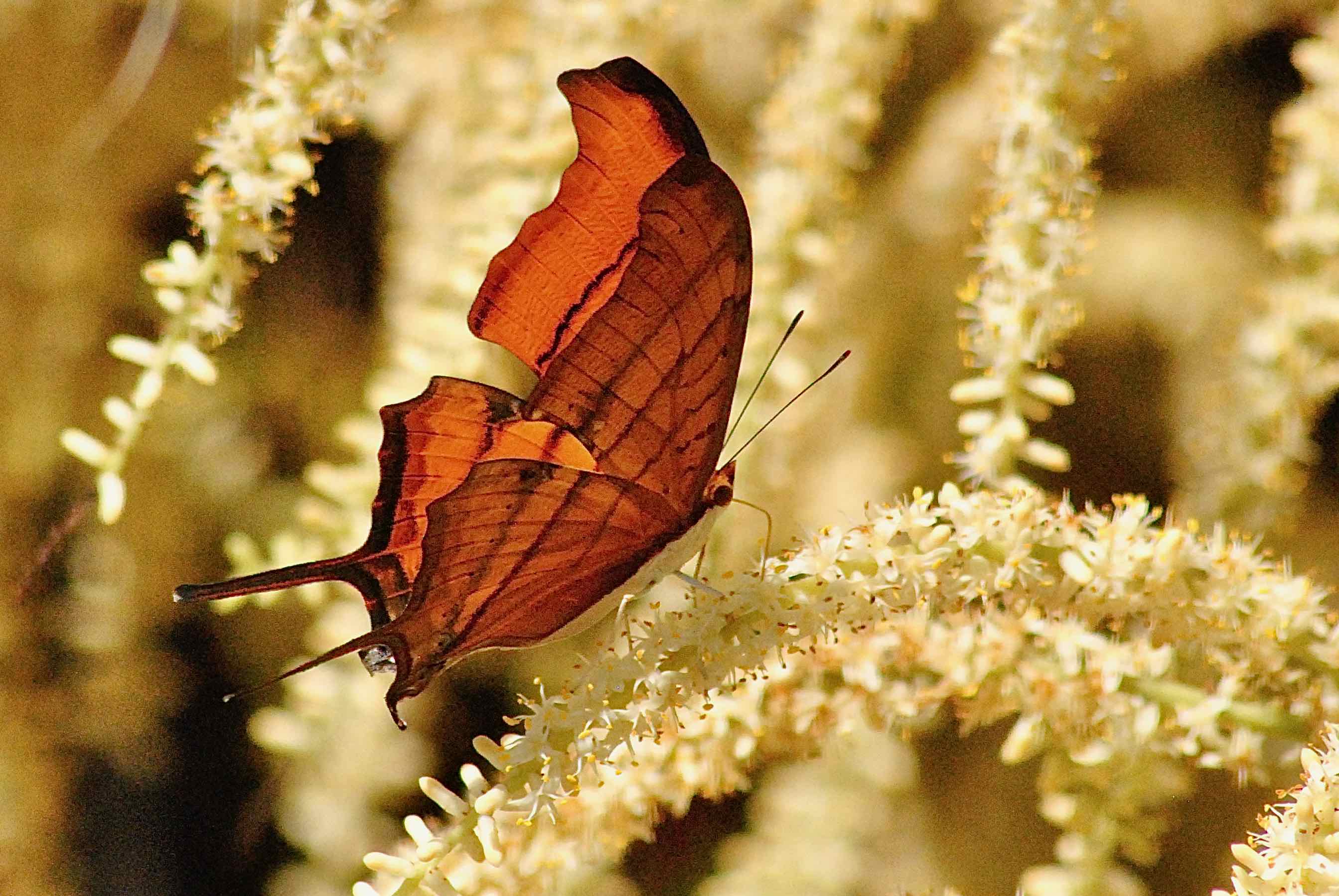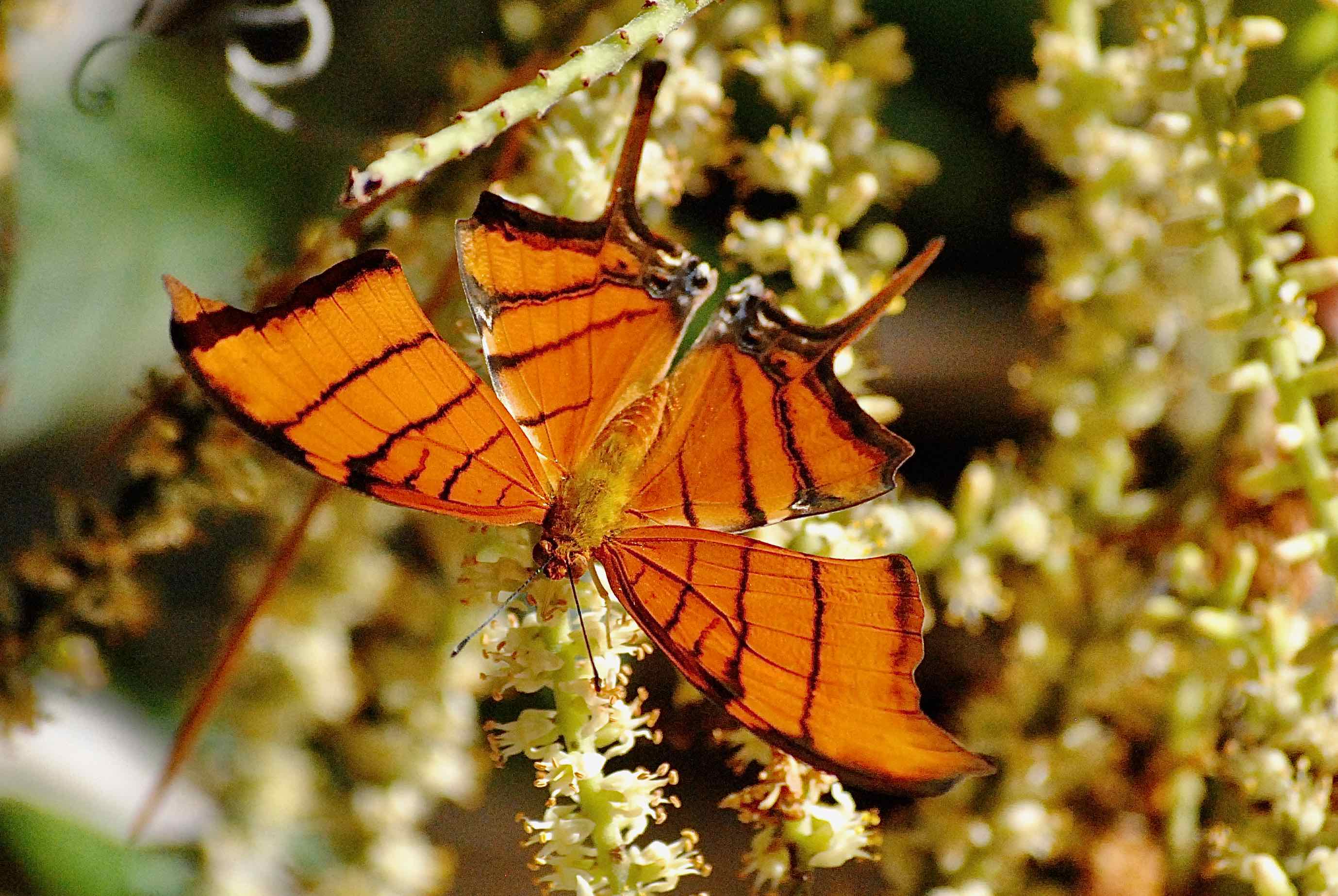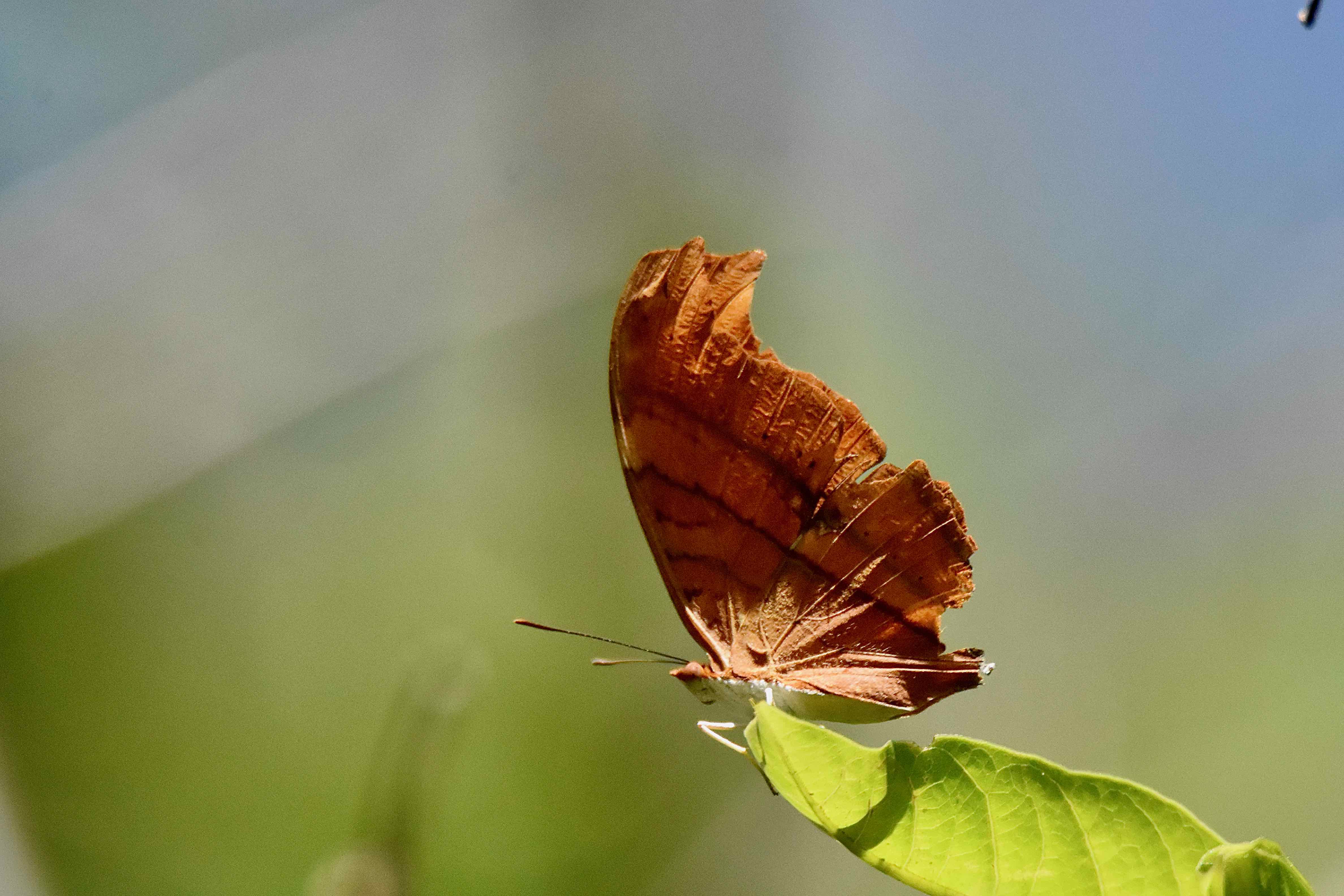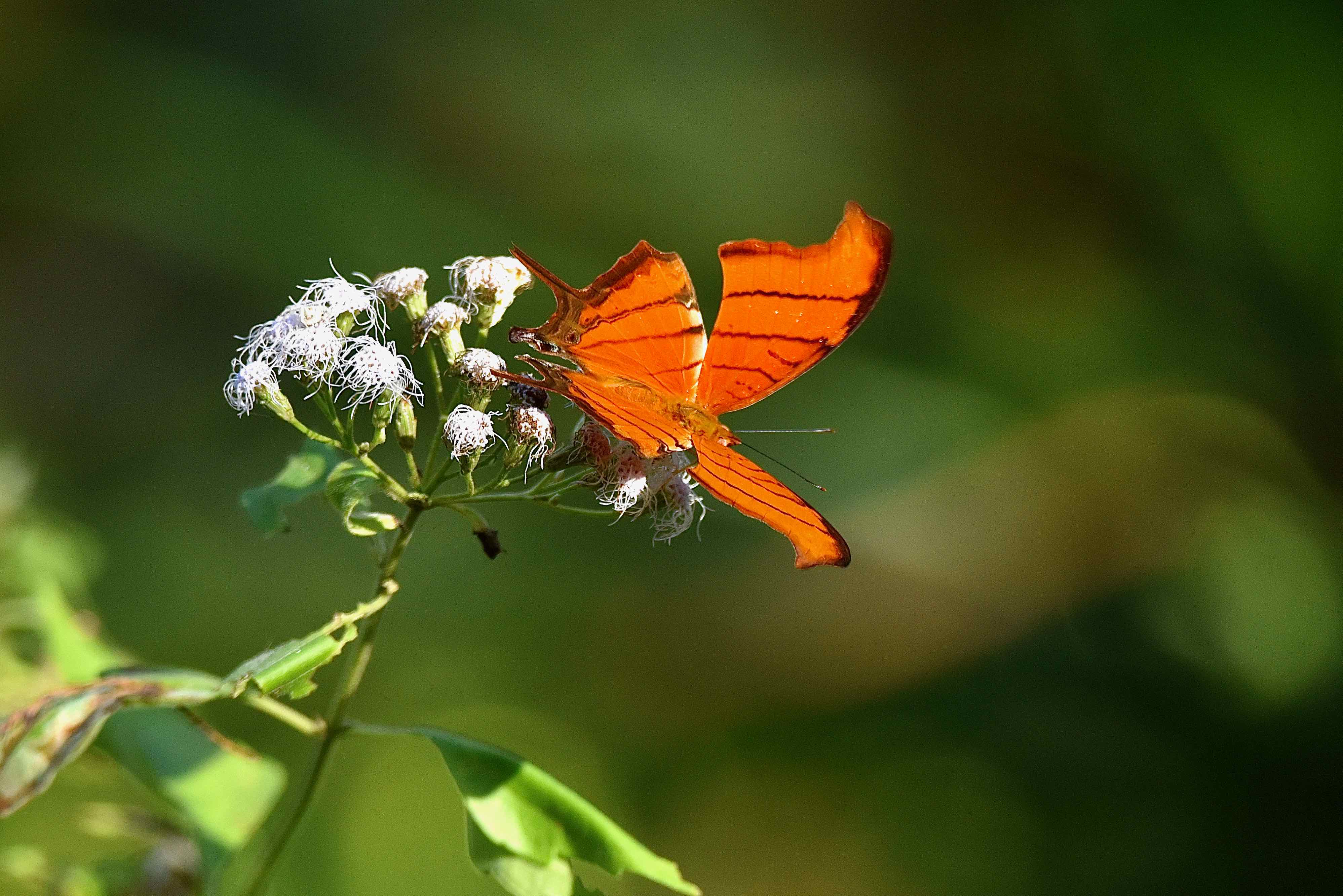
Ruddy daggerwing, photographed at Delray Oaks Natural Area, Delray Beach, Palm Beach County, in April 2015.
The ruddy daggerwing, Marpesia petreus, ranks among the more exotic butterflies found in Florida and one of the easiest to identify, its flaming orange and unusual dagger-like tail instantly giving it away.
It's a butterfly of tropical climes, and South Florida is one of only two places in the United States where you're likely to find the ruddy daggerwing. The other is extreme southern Texas. They will stray farther north and west, occasionally into Arizona and New Mexico and into the Central Plains but sightings there are extremely rare.
Their normal range extends south through Mexico, the Caribbean, Central America and South America as far as Brazil and Bolivia. Favorite habitats include tropical hammocks, the edges of hammocks and nearby open spaces.
Daggerwings are on the larger side as butterflies go, with a wingspan between two-and-three-quarters inches and three-and-three-quarters inches. They're bright orange above, with a series of three black lines that extend from the leading edges of the fore wings all the way through the back edges of the hind wings. The underside of daggerwings can be dark brown, as shown in the photo below, resembling a dead leaf. The body itself is green. Females are slightly darker than the males.
But the most distinguishing physical feature are the long, narrow tails on each of the hind wings that give the daggerwing its name. In flight, daggerwings can be mistaken for Julia heliconian butterflies, which are similar in size and color and in the overly wide shape of the forewings. But once they light, daggerwings are unmistakable. There just isn't any other butterfly quite like them, at least not in South Florida.
Their range in Florida extends south of a line from roughly Melbourne to just north of Lake Okeechobee, continuing southwest to the Gulf Coast. They're more common on the Atlantic side of the state than the gulf. Daggerwings are considered somewhat rare but can be abundant if you hit the right spot.
Two native fig trees, the strangler and the short-leaf, serve as hosts for the daggerwing. Giant milkweed, lantana and white vine are among its favorite necter plants, but we've seen them frequenting Spanish needles, cabbage palms and saw palmetto. They'll also sip from mud puddles.
Males will perch as high as 30 feet in the canopy, sometime fluttering about in groups of six or fewer, looking for females. Females for their part tend to remain hidden in the canopy. They'll lay eggs singly on leaves of the hosts. The egg is yellow; the emerging larva, or caterpillar is a combination orange and cream, with blue markings on the side, four black spikes lined in a single row along the back and two horns on the head. Ruddy daggerwings will produce multiple generations in a year; they are "in flight," or active year round.
Other names for the ruddy daggerwing include southern daggertail and tailed flambeau. They are members of Nymphalidae, the brush-foot family.



